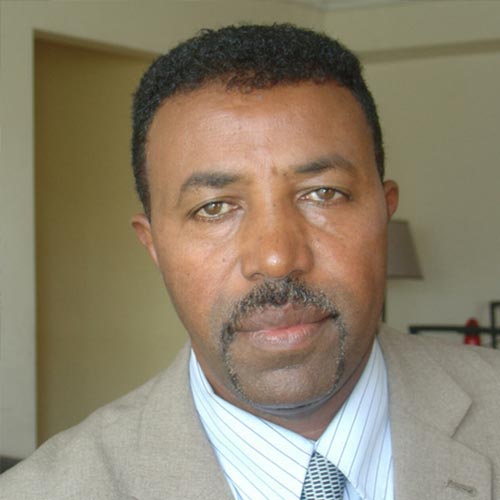Hey {{FirstName or “Friend”}},
This week, we launched The Renew Democracy Community, an online forum where members of the RDI community can connect with like-minded individuals, learn from one another, and become a part of the conversation about how to reinvigorate our democracy. Join our community and stay tuned for insider perks and exclusive content! And remember that our Virtual Democracy Rally is coming up on Feb. 15th!
Here’s what you need to know about democracy this week:
1. Coup in Myanmar as the Military Arrests Aung San Suu Kyi
2. Navalny Sentenced as Russia Cracks Down on Protests
1. American Parks Can Help Promote Democracy
Scroll ⬇ to read

Demonstrators protest against Myanmar’s military coup outside Myanmar’s embassy in Bangkok, Thailand. Credit: Athit Perawongmetha/Reuters.
Coup in Myanmar as the Military Arrests Aung San Suu Kyi
On Mon., Feb. 1, millions of people in the Southeast Asian country Myanmar (formerly known as Burma) awoke to the news that the country’s military, the Tatmadaw, had overthrown the nation’s elected government in a coup d’etat. Myanmar’s de facto leader Aung San Suu Kyi, as well as other civilian officials, opposition politicians, writers, and activists were reportedly taken at gunpoint and detained. And on Tuesday, Suu Kyi was spuriously charged with violations of import and export laws, and faces up to three years in prison. It is likely that the coup will unravel the nation’s precarious democracy and plunge Myanmar back into military dictatorship.
Credit: Encyclopedia Britannica.
The coup was precipitated by the results of November’s elections, in which the military’s political party won a mere 33 of 476 available seats, while Suu Kyi’s party won 396. In the days before the coup, the military made frivolous, unsubstantiated allegations of widespread fraud, pledging to “take action” and refusing to rule out a coup.
The Tatmadaw has consolidated its control by seizing the country’s infrastructure, suspending TV broadcasts, shuttering phone and Internet access in many major cities, closing banks, and cancelling flights.
Despite the coup, the streets remained largely peaceful; one observer described them as eerily calm. However, others reported seeing lines form at ATMs, the bright red flags of Suu Kyi’s party disappearing from homes and businesses, and caravans of rowdy Tatmadaw supporters parading in trucks and blasting patriotic music.’
1. What is the history of democracy in Myanmar?
Ever since the nation gained independence from Britain in 1948, the Tatmadaw have stifled the democratic aspirations of the people of Myanmar. Twice before, democratic movements have been crushed by military coups: first in 1962 when General Ne Win overthrew the elected civilian government, and then again in 1990 after a military junta reneged on a promise to honor the results of free and fair elections. Aung San Suu Kyi (Myanmar’s current elected leader) was the key figure of this latter democratic movement and won a Nobel Peace Prize for her nonviolent resistance.
And even since 2008, when mass protests led to reforms, the Tatmadaw have retained strong control over Myanmar’s pseudo-democracy. Under the 2008 constitution, the military appoints one-fourth of Parliament and maintains authority over key government agencies.
It is true that in 2015, the Tatmadaw accepted the results of a contested election swept by Suu Kyi’s party, making observers optimistic about the prospects for true multi-party elections. But Azeem Ibrahim, director of the Center for Global Policy think tank, cautioned that the progress was largely illusory: “Even though Myanmar always had the veneer of democracy, it was never a new democracy in any sense… The military still held all the cards. They had, essentially, power without any accountability whatsoever.”
2. How does this all relate to the ongoing genocide in Myanmar?
Though it’s impossible to know the counterfactual of whether there would still be a genocide in Myanmar if it were a democracy, dictatorships undoubtedly have a freer hand to commit horrible acts. And while we don’t know whether Suu Kyi acceeded to the genocide out of a desire to placate the military or whether she genuinely supported it, what’s happening to the Rohingya is an important part of any discussion involving Myanmar.
Rohingya Muslims are an ethnic minority in Buddhist majority-Myanmar who have been persecuted since the 1970s. In 2017, the military used attacks committed by an extremist Rohingya group as an excuse to launch a campaign of mass killing, rape, and arson. 730,000 Rohingyas have been displaced and tens of thousands have been killed, abuses which Suu Kyi defended before the International Court of Justice. The hundreds of thousands still in Myanmar remain disenfranchised and detained in squalid camps.
Suu Kyi, once globally admired, has undergone a precipitous fall from grace for her role supporting these atrocities. Nevertheless, her support for the military’s genocide has not protected her political position. After a fledgling democratic moment, Suu Kyi is once again under military imprisonment.
Even if the U.S.’ strategic interest in Myanmar remains limited, these often-ignored stories must be discussed. From 1987 to 2007, major Western news corporations devoted 50 times more coverage to Israeli-Palestininian skirmishes in which 7,000 died than the conflict in the Congo in which five million died. Stories matter even when America has less of a direct stake in them. We can no longer ignore the plight of the Rohingya, whether they are oppressed by dictators or democrats.

Credit: Alexander Zemlianichenko/The Associated Press
Navalny Sentenced as Russia Cracks Down on Protests
Massive protests against the arrest and imprisonment of opposition leader Alexei Navalny once again rocked Russia over the weekend, as it became increasingly clear that the Kremlin would do anything in its power to quell the growing opposition movement it sees as an existential threat to Putin’s regime. Tens of thousands took to the streets on Sunday, overcoming a huge law enforcement presence and police brutality. And on Tuesday, after Russian authorities sentenced Navalny, the Russian people once again returned to the streets in solidarity with the detained pro-democracy leader.
In response, the state implemented unprecedented measures to discourage protests. In Moscow, businesses were ordered closed, subway stations near the capital shut down, and pedestrian and vehicular traffic was heavily restricted. Hundreds of videos show officers dragging and beating a large number of peaceful demonstrators with tasers and clubs, leaving many bloody and badly injured.
In total, the authorities detained over 7,100 people during this week’s protests, mostly at random—the highest number of arrests recorded by monitoring groups in at least a decade, and around 3,000 more than last week. According to Amnesty International, so many citizens were arrested on Sunday that the state ran out of jail cells to hold them all.
Among those detained were at least 93 journalists, some specifically targeted for their posts on social media. By Tuesday, Leonid Volkov, the acting head of Navalny’s political organization, reported that half of his staff—about ninety people—were under arrest.
1. What happened at Navalny’s hearing on Tuesday?
Vehicles with diplomatic plates lined the street as the trial began, reflecting international attention and outrage.
Navalny, appearing in good health and spirits, delivered an impassioned speech to the court criticizing the actions of Putin and his regime. “The main reason this is happening,” Navalny said, “is to scare a huge number of people. One person is jailed to scare millions.”
As widely expected, the judge ruled that Navalny did violate his parole (by failing to report while in a coma in Germany) and sentenced him to serve 2.5 years in a prison colony—the remainder of his original 3.5 years prison sentence.
Thousands quickly mobilized to protest the ruling. Crowds marched through the capital, chanting “Russia without Putin!” Hundreds of riot police blockaded Moscow’s Manezhnaya Square, detaining over 1,000 people in Moscow alone.
This most recent injustice has only further enraged the Russian people. As Navalny said at his hearing, “Hundreds of thousands cannot be locked up… When they recognize this — and that moment will come — all of this will fall apart, because you cannot lock up the whole country.”
2. What has the United States done so far—and what remains to be done?
-
One day after Navalny’s arrest, the U.S announced sanctions on a Russian ship involved in constructing the controversial Nord Stream 2, an important undersea pipeline running from Russia to Europe.
-
Key members of the Biden Administration have publicly condemned Navalny’s jailing and the persecution of his supporters, including Secretary of State Antony Blinken and National Security Advisor Jake Sullivan.
-
In Biden’s first call to Putin last week, the U.S president reportedly called for Navalny’s “immediate release.”
This isn’t enough. The US should immediately implement direct sanctions on those involved in Navalny’s persecution.
We can do so by applying the Magnitsky act to all 35 individuals identified by Navalny’s team as aiding and abetting his poisoning and detainment. This will allow us to freeze the assets of those responsible and impose travel bans on them and their families.
Though not as broad, Senator Mitt Romney’s bill authorizing sanctions on Russian officials involved in Navalny’s poisoning would also be a good starting point.
A rapid and decisive economic and diplomatic response is vital. We must stand by the Russian people in their growing calls for freedom, showing Putin he cannot sustain his power through force alone.

Credit: PlanetWare
American Parks Can Help Promote Democracy
In a previous newsletter, we discussed parks as a partial solution to the epidemic of loneliness during the COVID-19 pandemic. Some cities are taking steps (like building fire pits) to boost the quality and comfort of outdoor spaces, particularly during the cold, winter months.
But there’s a separate, albeit related, reason to build parks. In addition to combating loneliness, parks can also play a role in boosting American democracy, argues Matthew Clarke, Executive Director for the non-profit Design Trust for Public Space.
According to Clarke, in an America “fractured along race, class, density, and creed,” parks provide a common space that can promote the country’s sense of community, civic engagement, and overall health. Importantly, parks can help remove us from our social media bubbles where we rarely interact with people of different backgrounds.
Research supports the idea that parks assist democracy. A 2014 study using survey data from Portland, Oregon found that participation in park programs may have a “snowball effect,” driving citizens to volunteer in other ways and become more civically engaged. A 2016 study of public parks in New Orleans found that they strengthened social connections between people from different groups, and that racial minorities and the elderly felt particularly empowered during visits.
What are other possible related solutions?
Parks don’t have to be in person to be effective at boosting civic engagement. To combat the divisive nature of social media, some are proposing digital parks or libraries that could oppose the echo chambers often found on Facebook, Twitter and Youtube. Dubbed “digital public infrastructure” by scholar Ethan Zuckerman, the idea is that an online space could bring people together instead of creating the social divisions that permeate traditional social media platforms.
Massachusetts gubernatorial candidate Danielle Allen and activist Eli Pariser argue that in order to be successful, unlike most social media platforms of today, digital parks should prioritize community-building rather profit-maximization. One long-term example of a successful digital forum is Vermont’s ‘Front Porch Forum,’ a moderated email chain that two-thirds of Vermonters use to engage in community discussions.
In a country plagued by the pandemics of loneliness, polarization, and disinformation (as well as illness, of course), it is now more vital than ever to build communities both online and offline: parks are one step in that process.








